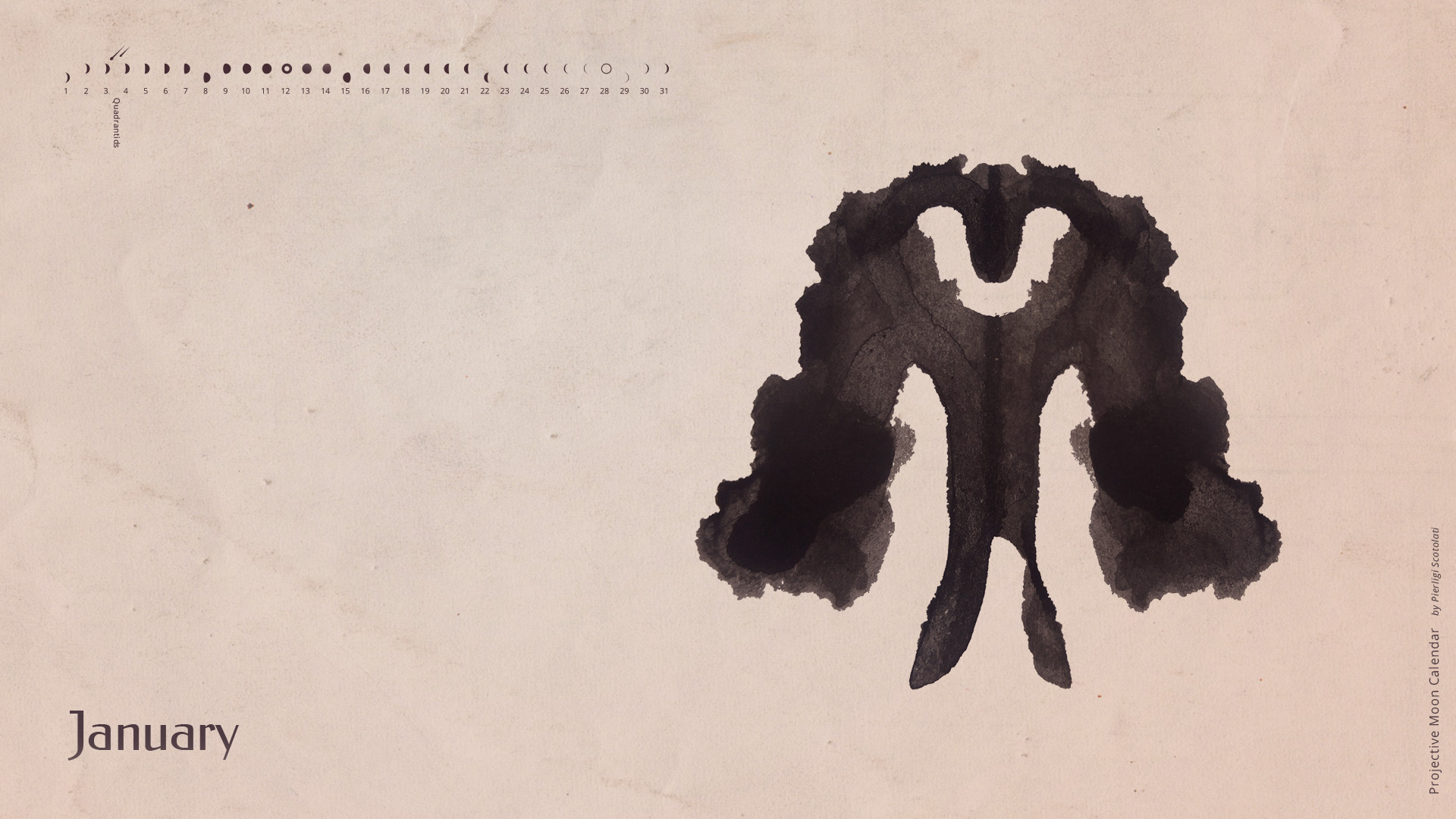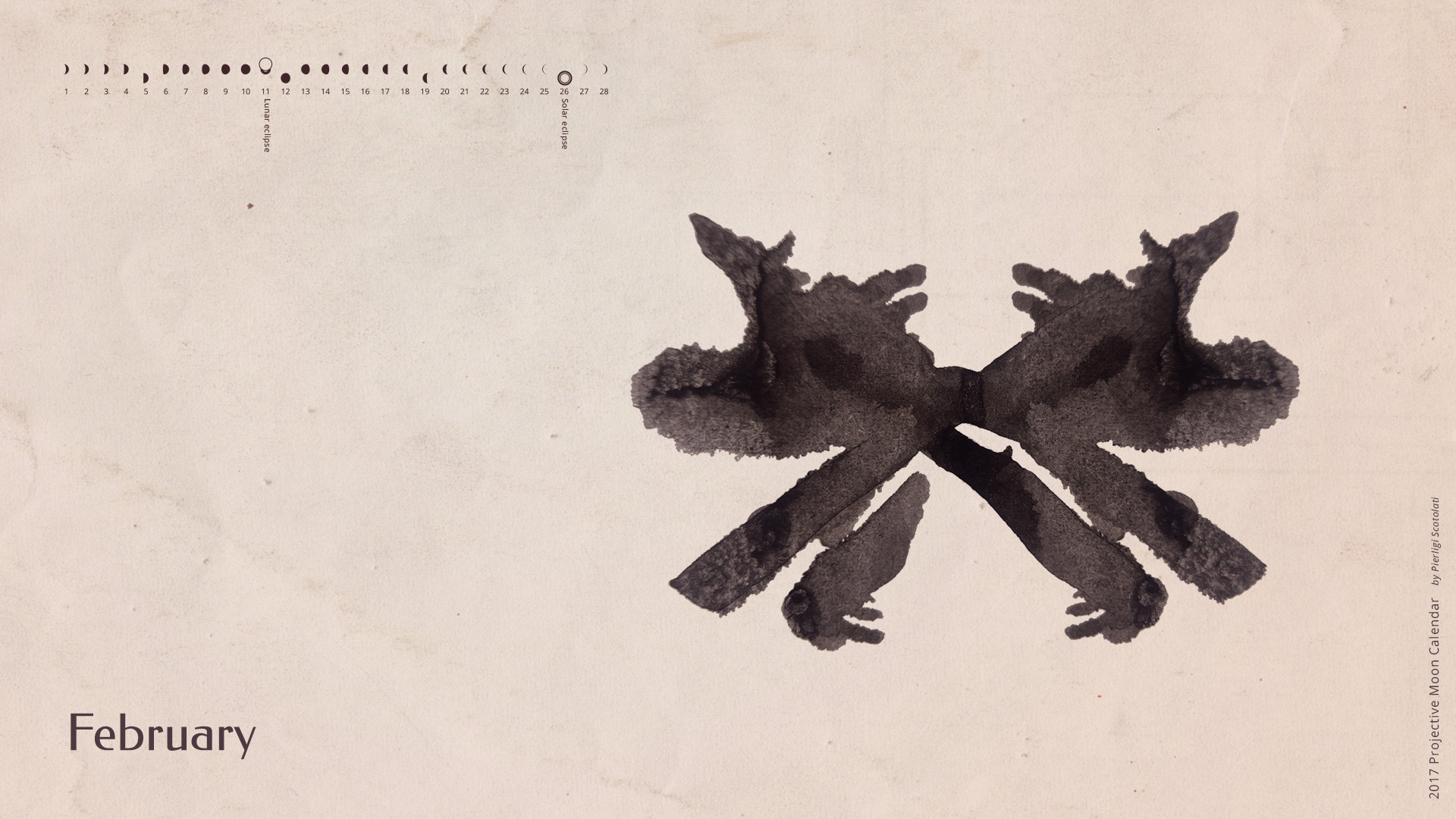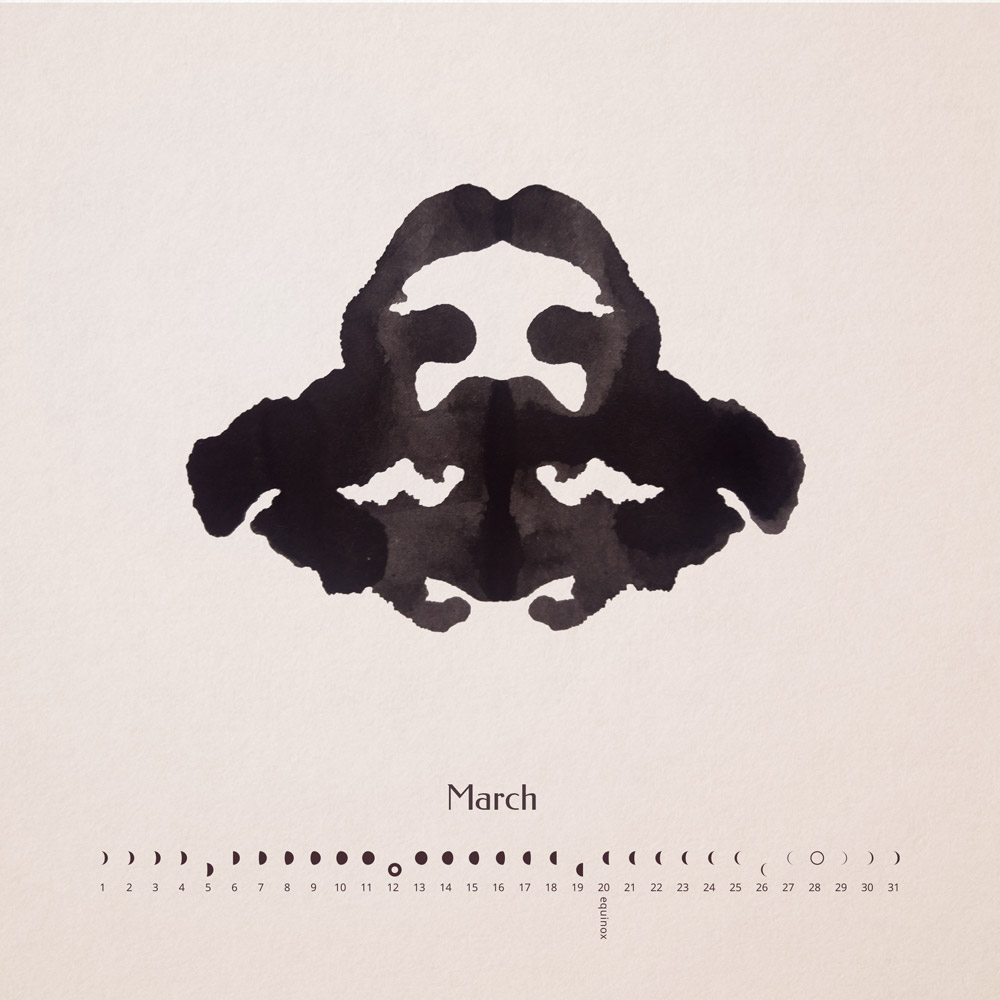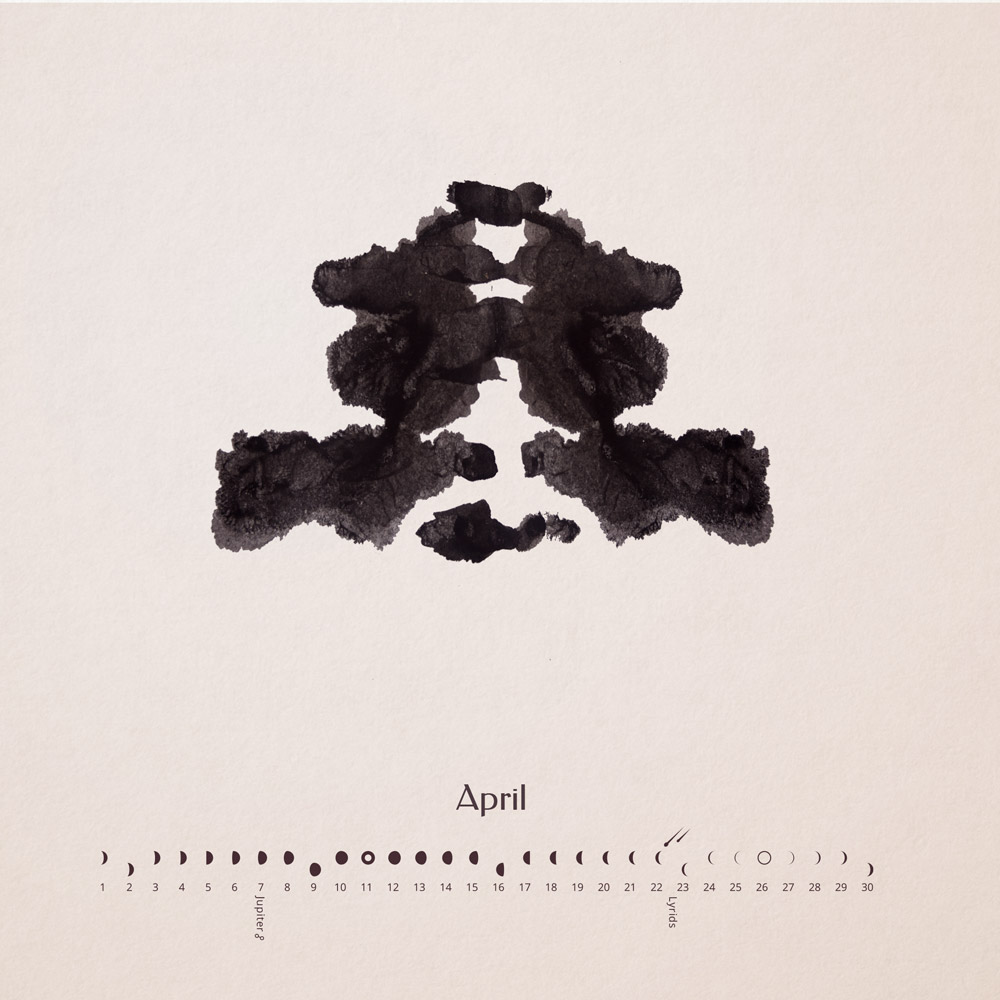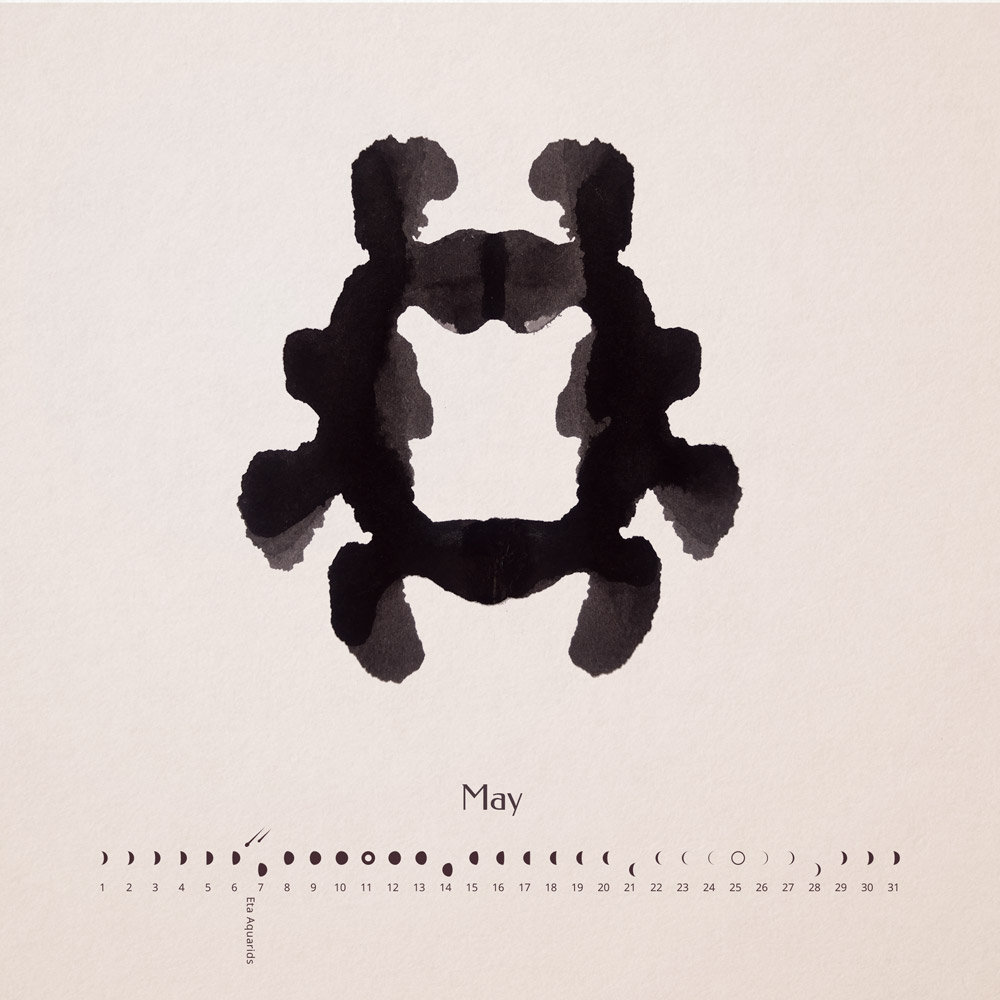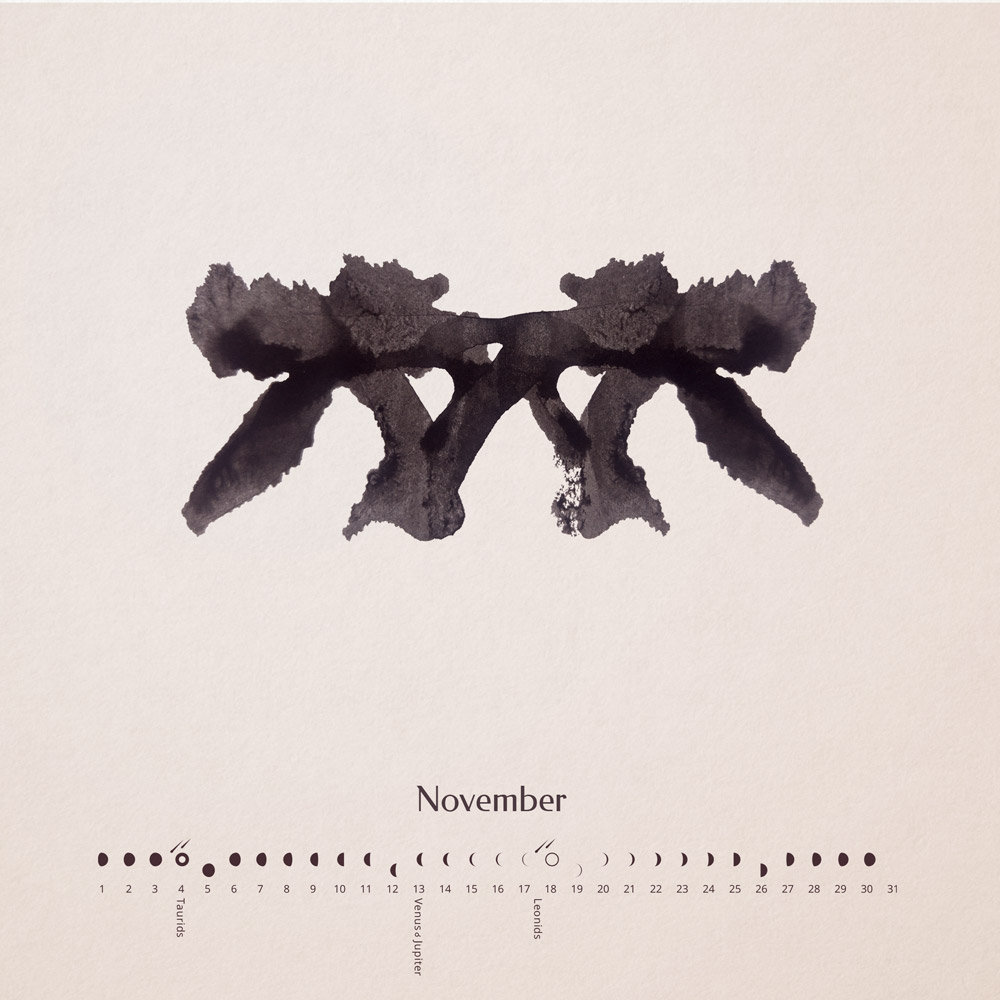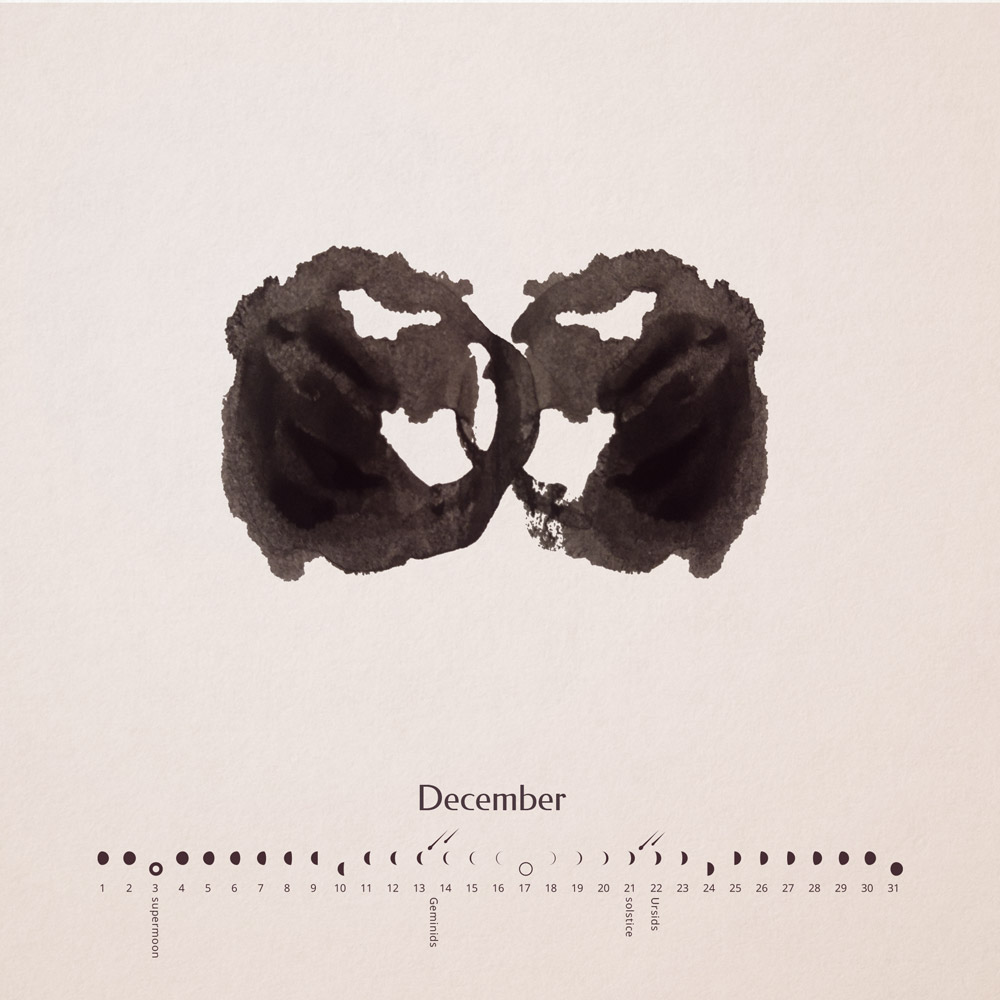The Projective moon calendar is a minimal astronomic calendar that adds monthly abstract ink figures inspired by Rorschach projective test to day by day moon phases, meteor showers, eclipses and other astronomical events.
The inkbolts are semi-randomly generated starting from an hand painted interpretation of Native American names of each month full moon.
This way if you intently peer at this month figure you may catch a glimpse of what lies inside you ready to sway you tomorrow.





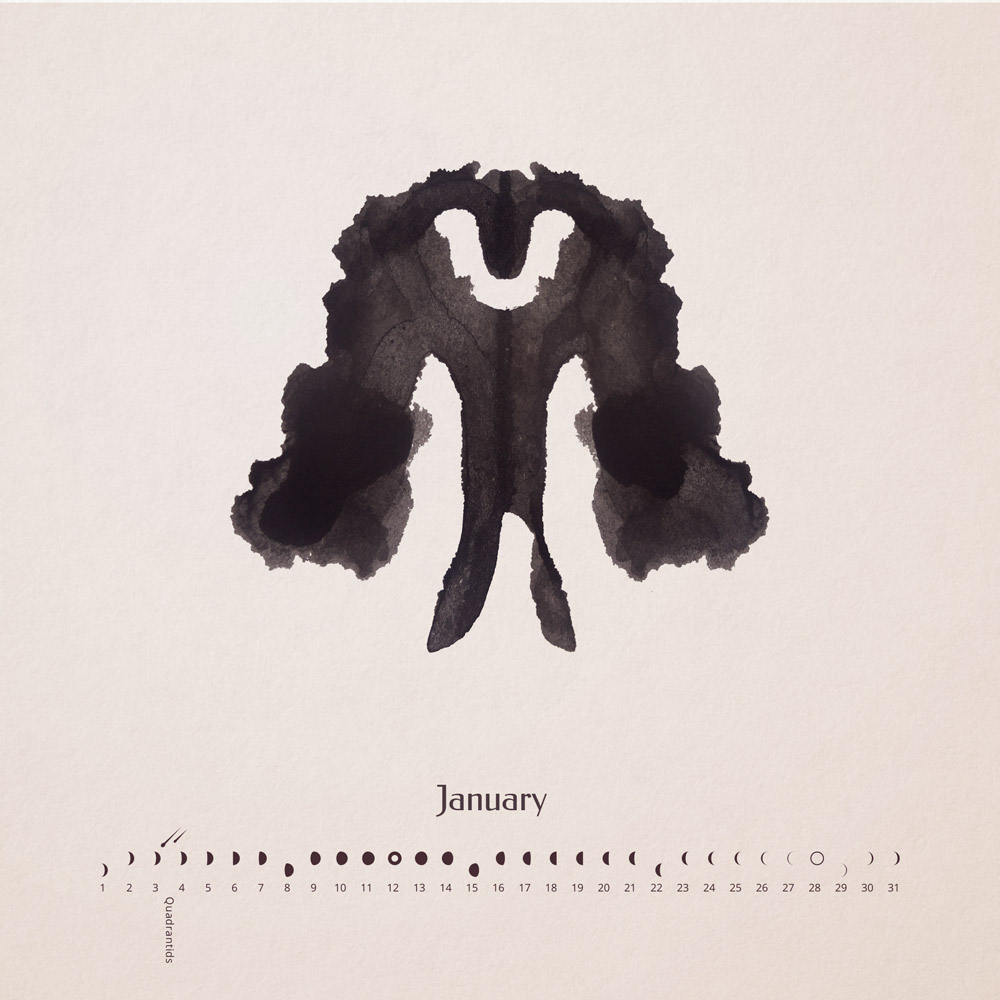
January
Full Wolf Moon: Amid the cold and deep snows of midwinter, the wolf packs howled hungrily outside Indian villages. Thus, the name for January’s full Moon.
January will see the Quadrantids meteor shower. It is an above average shower, with up to 40 meteors per hour at its peak. It is thought to be produced by dust grains left behind by an extinct comet known as 2003 EH1.
– The projective test –
In psychology, a projective test is a personality test designed to let a person respond to ambiguous stimuli, presumably revealing hidden emotions and internal conflicts projected by the person into the test. The idea origins in psychoanalytic psychology, which argues that humans have conscious and unconscious attitudes and motivations that are beyond or hidden from conscious awareness. Recent research suggesting that implicit motivation is best captured in this way has increased the research and use of these tools.
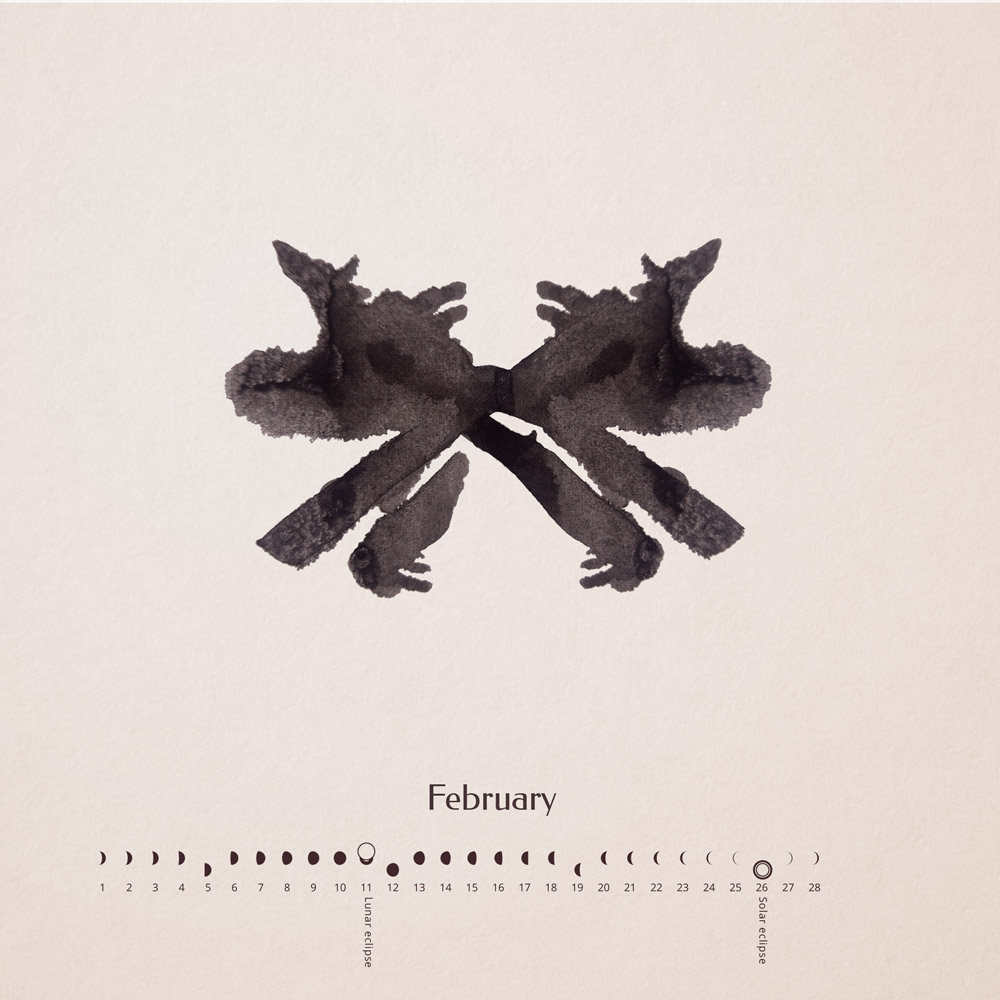
February
Since the heaviest snow usually falls during this month, native tribes of the north and east most often called February’s full Moon the Full Snow Moon.
February will see a penumbral lunar eclipse and an anular solar eclipse. A penumbral lunar eclipse occurs when the Moon passes through the Earth’s partial shadow, or penumbra. It will be visible throughout most of eastern South America, eastern Canada, the Atlantic Ocean, Europe, Africa, and western Asia. (NASA Map and Eclipse Information)
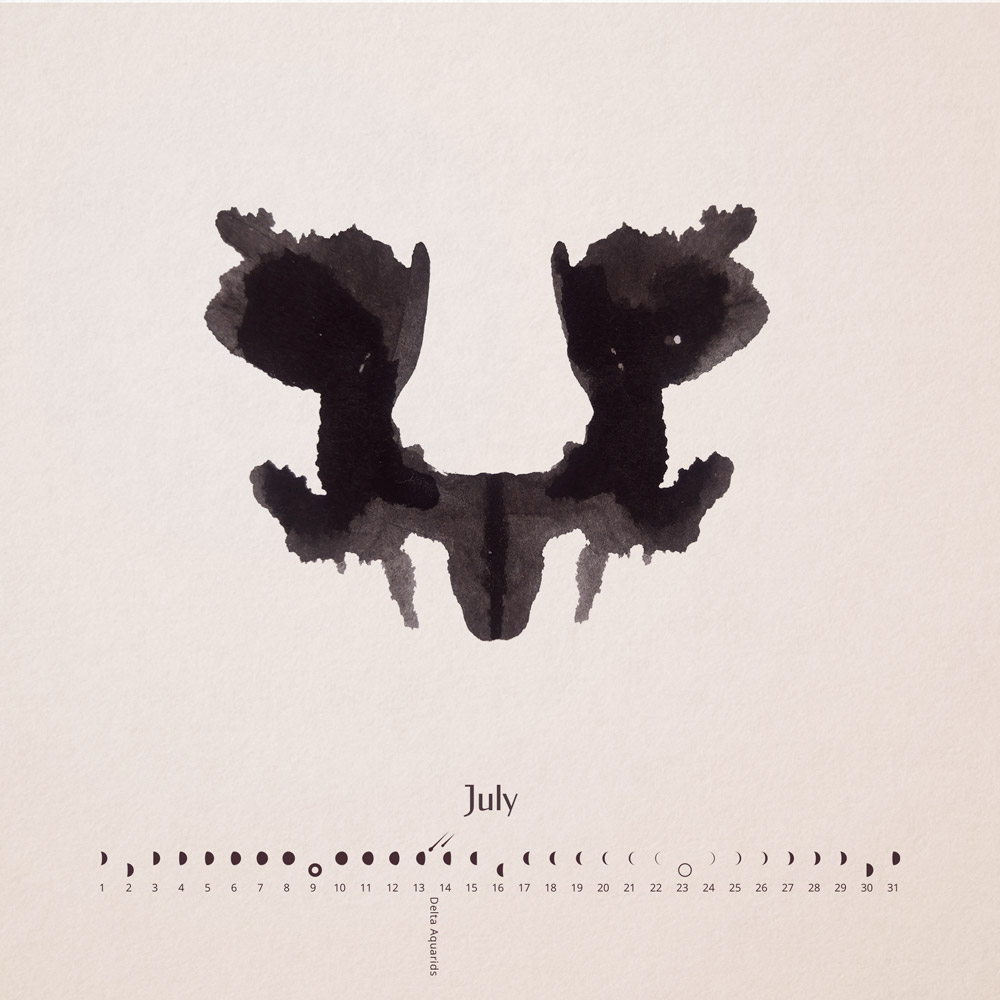
July
>The Full Buck Moon: uly is normally the month when the new antlers of buck deer push out of their foreheads in coatings of velvety fur.
This month will see the Delta Aquarids meteor shower, an average shower that can produce up to 20 meteors per hour at its peak. It is produced by debris left behind by comets Marsden and Kracht. The shower runs annually from July 12 to August 23. It peaks this year on the night of July 28 and morning of July 29.
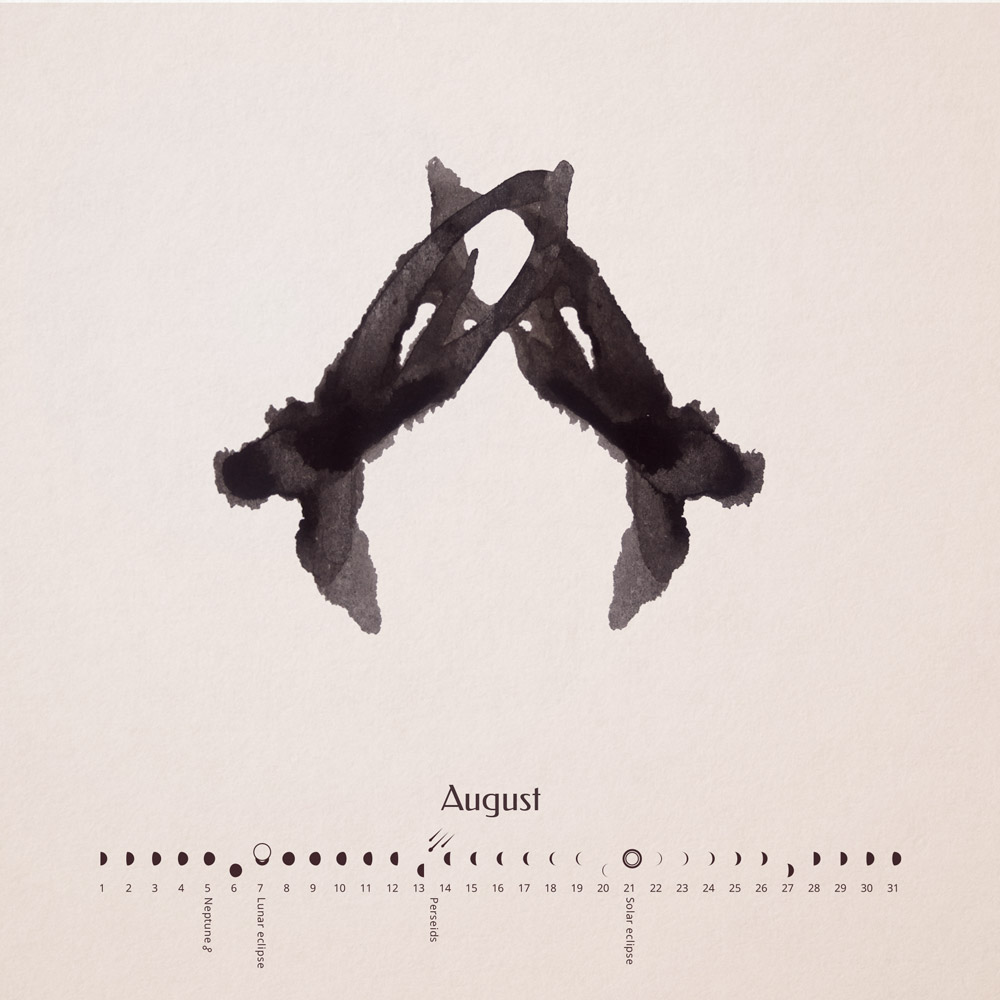
August
>Full Sturgeon Moon: The fishing tribes are given credit for the naming of this Moon, since sturgeon, a large fish of the Great Lakes and other major bodies of water, were most readily caught during this month.
August will see a partial lunar eclipse visible throughout most of eastern Africa, central Asia, the Indian Ocean, and Australia; and a total solar eclipse. The path of totality will begin in the Pacific Ocean and travel through the center of the United States.
Download Wallpapers
